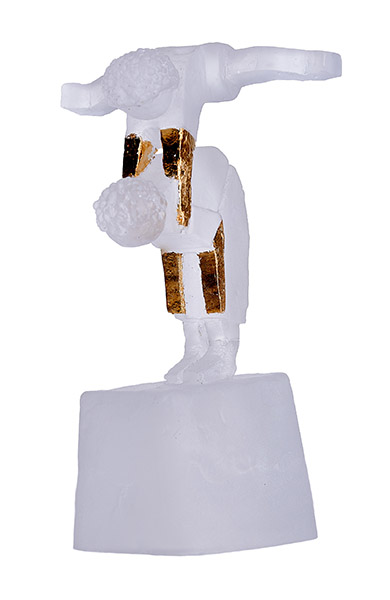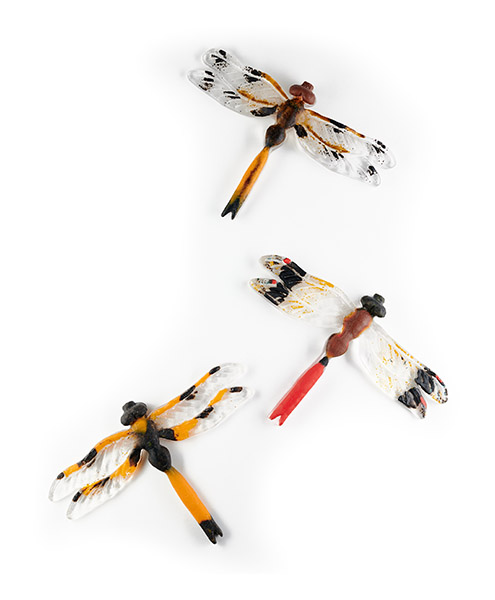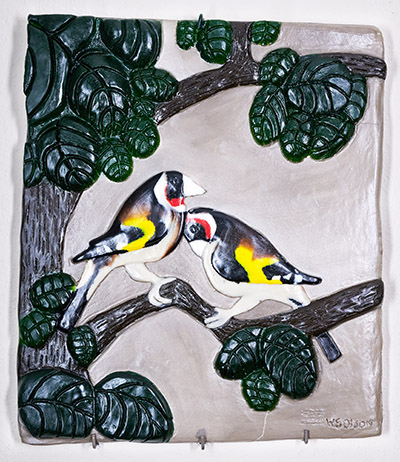Gallery - Kiln casting
English | Nederlands

Kiln-cast glass: 'LeapFrog' (W x D x H: 18 x 16 x 26 cm)
The inspiration for the Leapfrog came from a statue made by Dominic Benhura of Zimbabwe. We first saw work of this sculptor at Kirstenbosch Botanical Gardens in Capetown (SA).
And afterwards we saw a group of sculptures at the Chianti Sculpture Park, a permanent exhibition of contemporary sculptures, inaugurated in 2004 on an initiative of Piero and Rosalba Giadrossi. The statue we made is the middle of three.
The process of making the Leapfrog was a very long one. First we made the whole sculpture out of wax on scale. Before enclosing the model with plaster and silica we added some wooden sticks to let the air vent out.
When the first layer of plaster mixture was dry, we added multiple layers of more mixture together with strips of glass fibre. When the mould was thick enough on all sides with a funnel shape on top, we heated the wax over boiling water, leaving a cavity in the mould. We weighed the amount of wax to get the same amount of glass to fill the cavity and added some extra.
After the mould dried for several days we added the amount of glass, put it in a kiln supported by ceramic kiln posts and fused the whole.
When the work was cooled down, the mould was removed revealing the rough work. Here and there were some bits that needed to be ground off. The last part was adding some leaf gold to highlight the arms.

Kiln-cast glass: Dragonflies (W x D x H: 24 x 18 x 2 cm each)
The dragonflies were first made out of clay and afterwards cast in a plaster mixture. After setting we added some enamels mixed with wallpaper paste, and on top bigger chunks of glass. The moulds were then put in a kiln at heated up till fusing temperatures. When the moulds were cooled down, the plaster was removed and hardly any faults needed to be ground off.

Kiln-cast glass: Goldfinches (W x D x H: 42 x 3 x 50 cm)
The inspiration of the second work came from ceramic work by W.S. Olson who made this work for my parents to adorn the house we were living in.
The model was made with clay and later cast with a plaster mixture and glass fibres. After setting the clay was removed and filled with a mixture of glass granules and wallpaper paste.
When the figure was finished a layer of glass chunks were laid on top before fusing the whole in the kiln.
After cooling down, the plaster mould was removed, and the work was completed with some minor grinding.
Other galleries: